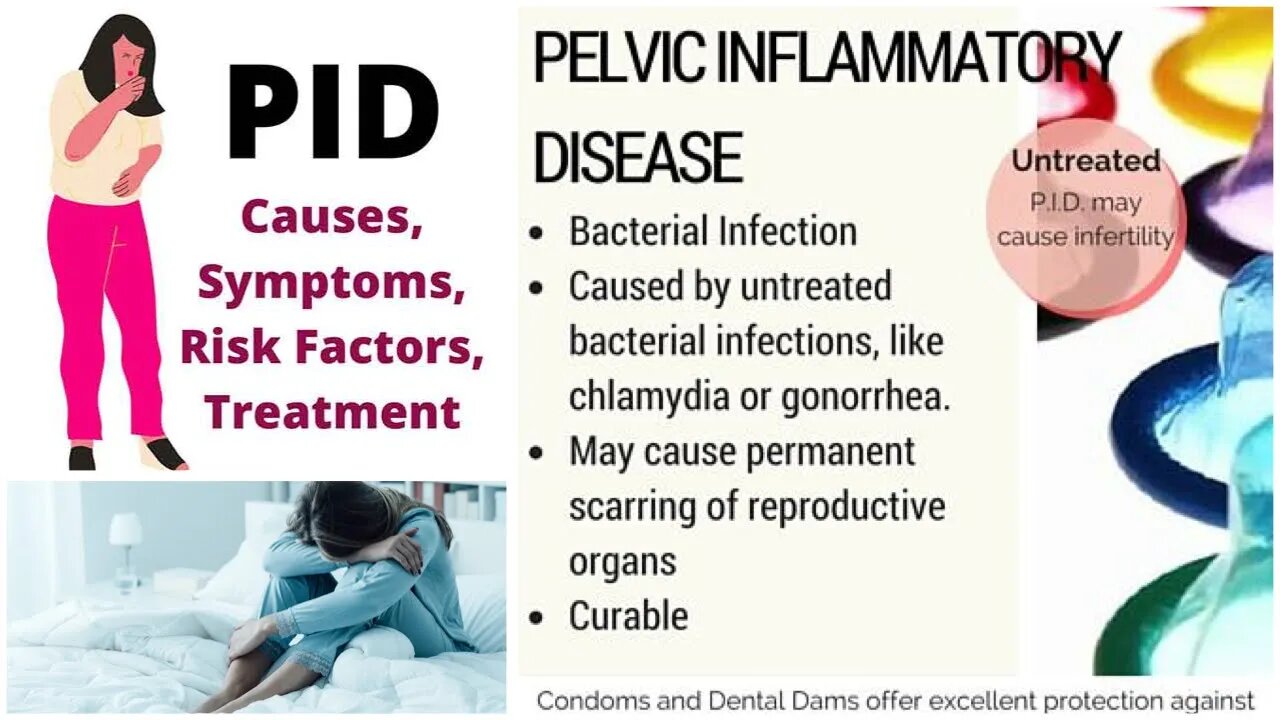Premium Only Content

How to treat pelvic inflammatory disease
#pid #pelvicinflammatorydisease #english #medical #hubetabibi
Pelvic inflammatory disease (PID) is an infection of the female reproductive organs. The pelvis is in the lower abdomen and includes the fallopian tubes, ovaries, cervix, and uterus.
According to the U.S. Department of Health and Human Services, this condition affects about 5 per cent of women in the United States.
Several different types of bacteria can cause PID, including the same bacteria that cause sexually transmitted infections (STIs) gonorrhoea, and chlamydia. What commonly occurs is that bacteria first enter the vagina and cause an infection. As time passes, this infection can move into the pelvic organs.
PID can become extremely dangerous, even life-threatening if the infection spreads to your blood. If you suspect that you may have an infection, see your doctor as soon as possible.
Risk factors for pelvic inflammatory disease
Your risk of pelvic inflammatory disease increases if you have gonorrhoea or chlamydia, or have had an STI before. However, you can develop PID without ever having an STI.
Other factors that can heighten your risk for PID include:
having sex under the age of 25
having multiple sex partners
having sex without a condom
recently having an intrauterine device (IUD) inserted
douching
having a history of pelvic inflammatory disease
-
 17:30
17:30
Bearing
10 hours agoTHIS is why Men Shouldn’t Compete in Women's Sports 🤣
29.2K64 -
 13:19
13:19
VSOGunChannel
1 day ago $2.48 earnedI've Never Cleaned This Gun
27.9K4 -
 16:19
16:19
DeVory Darkins
23 hours ago $12.03 earnedWoke activist dealt HUGE BLOW after judge approves deportation
36.9K115 -
 9:55
9:55
Russell Brand
1 day agoThis Is Absolutely Shocking...
86.8K85 -
 26:01
26:01
The Brett Cooper Show
2 days ago $4.47 earnedChappell Roan Says All Parents Are Miserable. Is She Right? | Episode 21
35.7K27 -
 1:34:25
1:34:25
Michael Franzese
21 hours agoThey Blame Trump for Everything - But Who’s Really Wrecking the Economy?
73.9K69 -
 1:43:55
1:43:55
I_Came_With_Fire_Podcast
16 hours agoThe REVOLUTION to SAVE AMERICA Starts At HOME
58.9K10 -
 28:33
28:33
Mike Rowe
3 days agoWhy Are Healthy Men Exiting The Workforce? | Nick Eberstadt #274 | The Way I Heard It
55.9K218 -
 38:40
38:40
Adam Carolla
2 days ago $13.67 earnedBill Maher Calls Trump 'Effective'?! You won't see it coming! | Adam Carolla Show | #news
84.5K32 -
 14:40
14:40
Talk Nerdy Sports - The Ultimate Sports Betting Podcast
7 hours ago4/12/25 - Wake the F Up: It’s Saturday! It’s War!
40.8K5